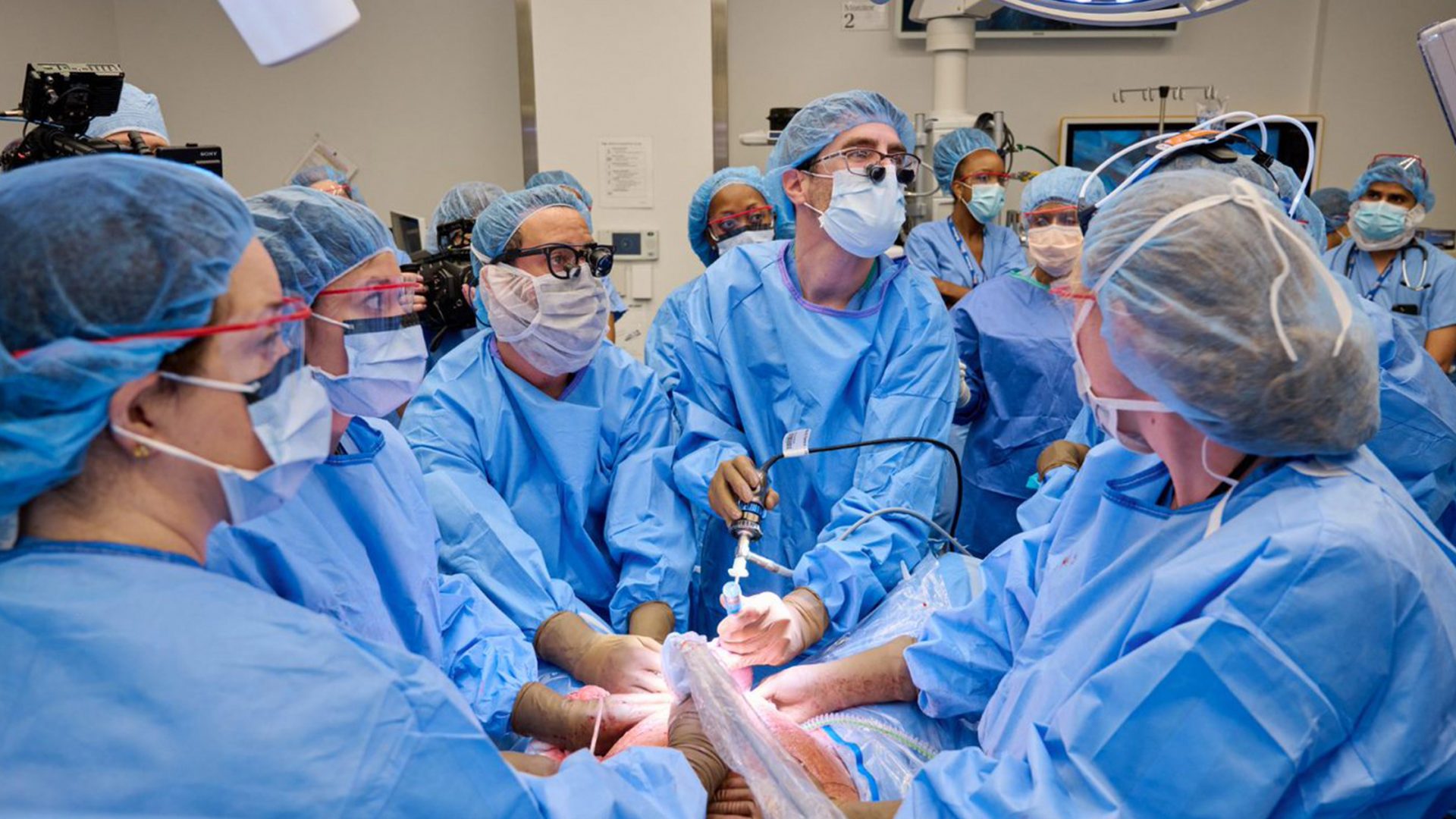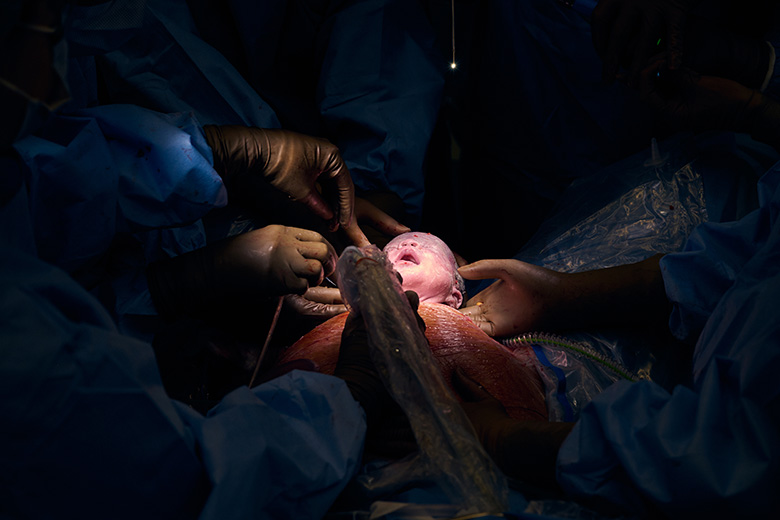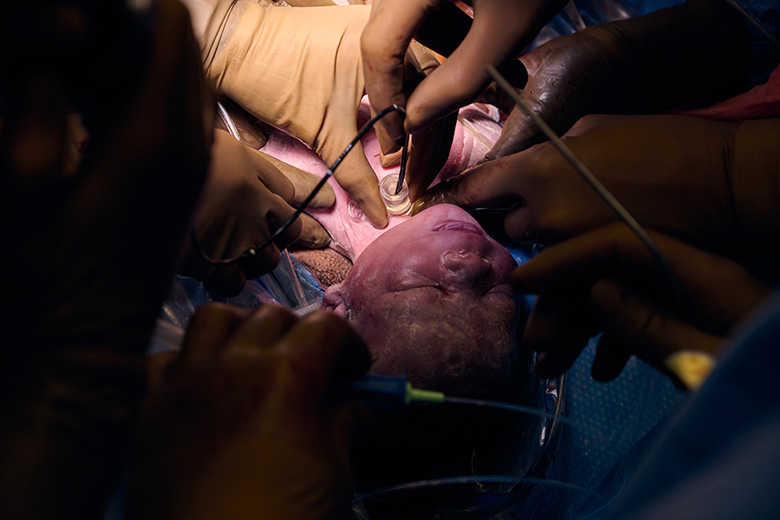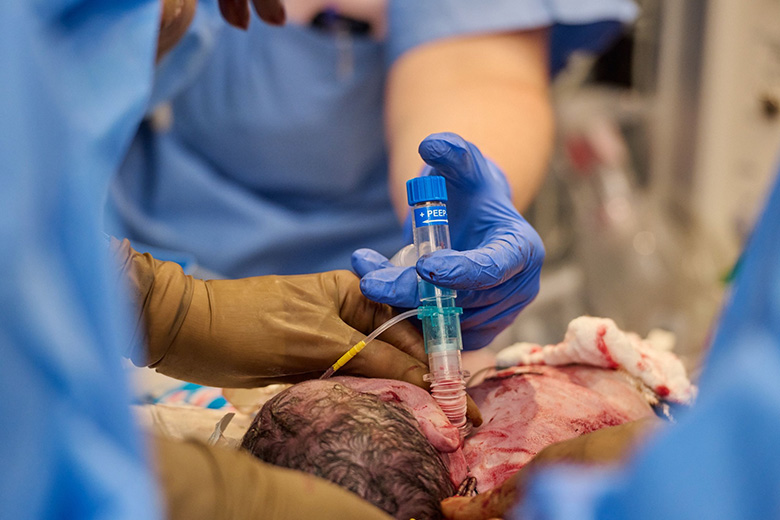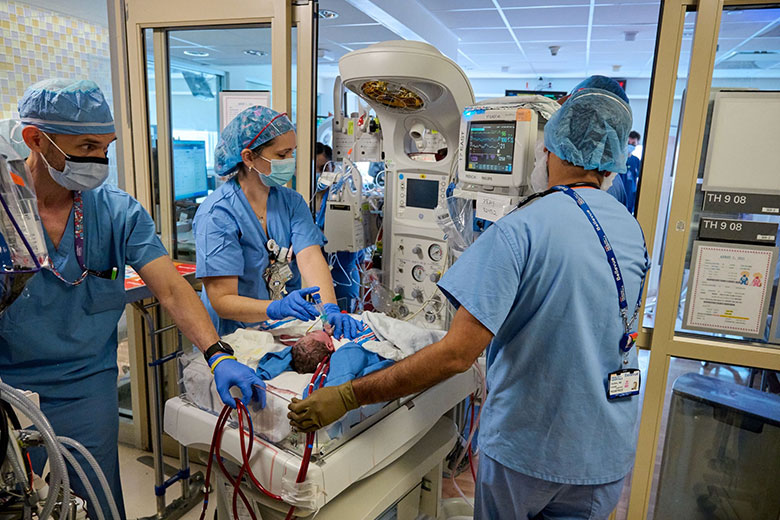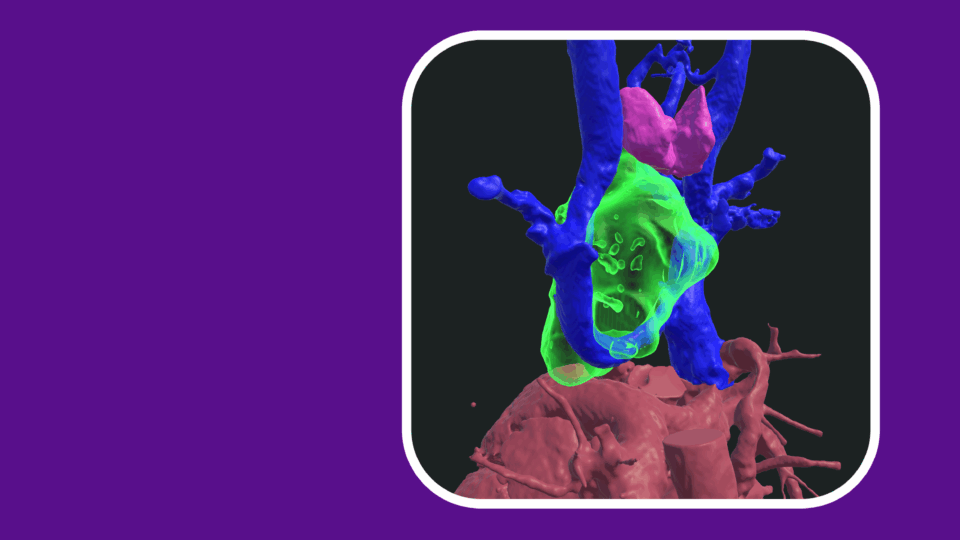In a complex fetal surgery procedure performed at Hassenfeld Children’s Hospital at NYU Langone, a multidisciplinary team established an airway in a partially delivered fetus with congenital high airway obstruction syndrome (CHAOS), enabling a safe birth and subsequent interventions of the heart and rectum.
CHAOS is an extremely rare and serious birth defect that inhibits the child’s ability to breathe at birth. In this present case, a prenatal ultrasound scan at 24 weeks of gestation identified the complete blockage in the trachea. Without intervention, mortality is 100 percent.
“The ultrasound revealed large, overinflated lungs, which can indicate CHAOS,” says Ashley S. Roman, MD, vice chair for clinical affairs–obstetrics and co-director of the Fetal Diagnosis and Treatment Program. “As a result of the airway blockage, the lung fluid cannot escape the fetal mouth, causing the lungs to fill up immensely and swell.”
The highly specialized delivery, known as EXIT (ex-utero intrapartum treatment)-to-airway, takes advantage of the uteroplacental blood flow and maternal-fetal gas exchange while the baby’s trachea is secured. Full delivery and ventilation followed.
The mother, Yadi, had comorbidities—her BMI was 31, she had the Prothrombin gene mutation, and she was on 40 mg of Lovenox daily prior to the surgery. Yadi also had four subsequent miscarriages, polycystic ovary syndrome, and stage 4 endometriosis.
“As the operation begins, the mother receives deep general anesthesia to achieve complete uterine relaxation,” says Dr. Roman. “Uterine flaccidity is necessary to preserve uteroplacental blood flow, although this poses the serious risk of severe hemorrhage in the event of placental abruption, so this is high risk to both mom and baby.”
The EXIT Procedure
The goal of the EXIT procedure is to establish an airway before the umbilical cord is cut, avoiding immediate crisis and allowing for a more stable transition from placental circulation to newborn circulation. Planning for EXIT treatment depends on early detection of the fetal anomaly. In this case, the procedure was scheduled for gestational week 35. Over 25 NYU Langone providers from maternal–fetal medicine, neonatology, pediatric surgery, pediatric ENT, and pediatric anesthesiology collaborated to plan the EXIT procedure.
“CHAOS is an apt acronym for this condition; there is zero room for failure,” says Jason C. Fisher, MD, director of Children’s Surgical Services and director of the Division of Pediatric Surgery. “As soon as we learned of the diagnosis, we initiated a multidisciplinary team to begin the months of preparation.”
“The most important thing about CHAOS is early diagnosis, detailed fetal assessment, and an adequate postnatal intervention for establishing an airway.”
Scott M. Rickert, MD
While the fetus’ head and neck were extracted from the uterus, Scott M. Rickert, MD, director of the Division of Pediatric Otolaryngology and co-director of the Pediatric Aerodigestive Center, first attempted rigid scope. With that method failing given the full blockage, a successful tracheostomy was performed.
Baby Aydin Idris Martin was successfully delivered, but the care team discovered his lungs were inflated because of the airway obstruction. This put pressure on his heart, affecting its ability to function properly. Moments after the EXIT, neonatologists started to resuscitate Aydin, but it was clear his heart was not recovering. Dr. Fisher made the quick decision to initiate ECMO to support his heart and lungs. Aydin was transferred to the NICU in critical condition—still on ECMO, but with an assisted airway established.
Family Commitment Is Key
“The most important thing about CHAOS is early diagnosis, detailed fetal assessment, and an adequate postnatal intervention for establishing an airway,” says Dr. Rickert. “Every EXIT procedure can be a bit different. When you have one congenital abnormality, you may have others.”
Family commitment is equally important to ensuring the baby’s optimal long-term outcome, adds Dr. Rickert. “Aydin has at least one more surgery necessary before he will be able to breathe completely on his own. We plan to keep monitoring his airway and do a reconstruction in the next few years when he’s grown a bit bigger.”


